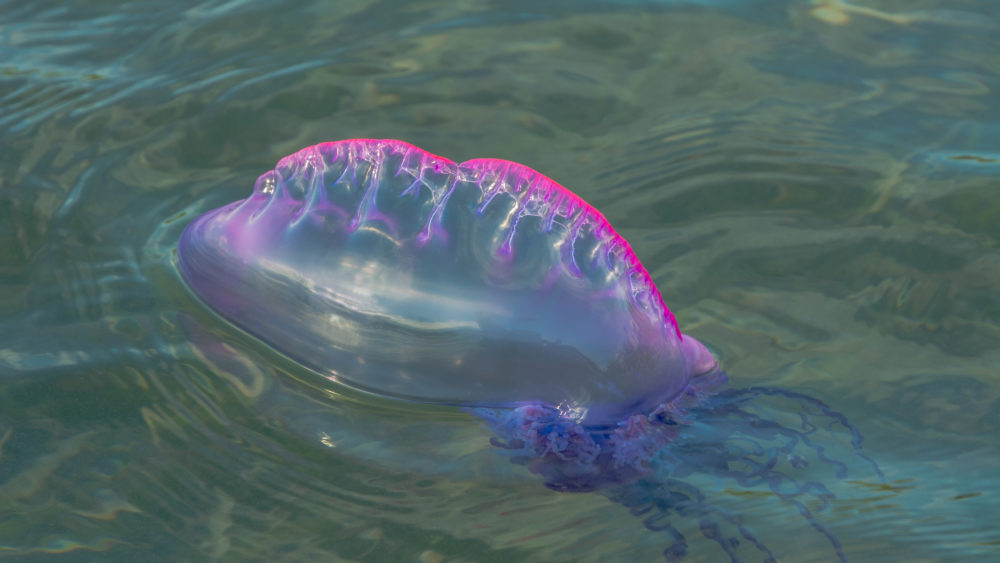The South Carolina coastline is home to many magnificent animals, some of which have evolved to protect themselves from predators in pretty astonishing ways! While playing in the ocean this summer, you may find yourself face-to-face with some of these creatures. Although they are intriguing, be sure to keep your distance from these animals, whose adaptations have the potential to harm humans if provoked.

Sea Nettle (Chrysaora quinquecirrha)
Sea nettles are the most common perpetrators of summer stings off the coast of South Carolina, delivering painful inflictions. Contrary to popular belief, urine and alcohol are not effective treatments to jellyfish stings! Instead, use the edge of a credit card to remove remaining tentacles and thoroughly wash out the afflicted area with seawater or a saline solution. Hot packs or hot water are your best options to reduce pain. Aquarium educators also offer the spray product Sting No More in the event that a participant gets stung during one of our seining programs.

Portuguese Man-of-War (Physalia physalis)
An infrequent visitor of the South Carolina coast, the Portuguese Man-of-War is not a true jellyfish, but rather a colorful colony of floating organisms called polyps. If stung, however, follow the jellyfish sting protocol listed above. Vinegar is not an effective treatment, as it can cause the nematocysts to continue firing. Be sure to seek medical attention if you experience a severe reaction.

Cannonball Jellyfish (Stomolophus meleagris)
A group of jellies is called a smack, swarm or bloom, and feed on tiny zooplankton. Cannonball jellyfish are commonly spotted midsummer floating in the water or washed along the shore, but did you know these jellies have a sting that most humans can’t feel?

Atlantic Stingray (Hypanus sabinus)
Shuffling through the water is the best way to avoid stepping on a stingray’s venomous barb. Stepping on one of these guys may mean a trip to the emergency room if the reaction is severe. If punctured, do not remove the barb yourself, go to a medical professional for safe removal and proper cleaning. Hot water can be used for pain relief.

Mantis Shrimp (Squilla empusa)
The mantis shrimp packs a mean punch (literally)! Deceivingly strong, these shrimp look-alikes (that are actually stomatopods) use their powerful claws to club or spear their prey, or a poking finger, if held. Although injuries are uncommon, these burrow-dwellers are sometimes found in shrimp nets and are carefully removed for safety purposes.


